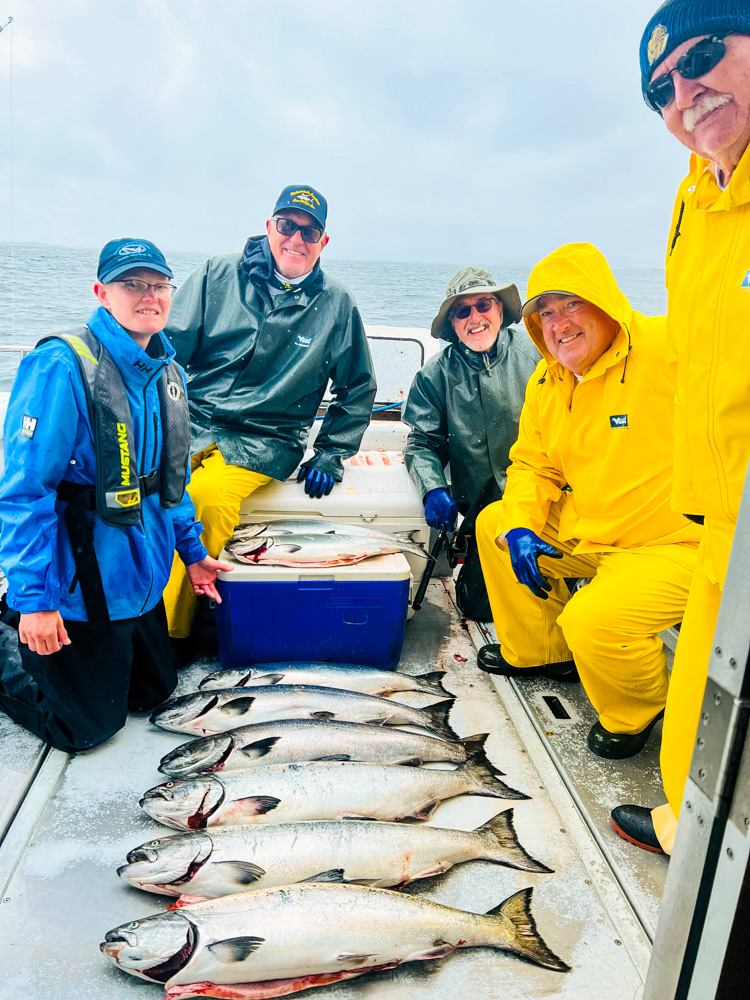
It was our third and final day of fishing at Queen Charlotte Islands in Canada. Our group of nine anglers were on two separate boats and we needed more halibut to fill our limits. One boat did much better with catching king salmon than the other while our boat did OK on the bottom fish. One day the boat I was on was catching lingcod left and right and while none were huge, they made for plenty of fish tacos this summer.

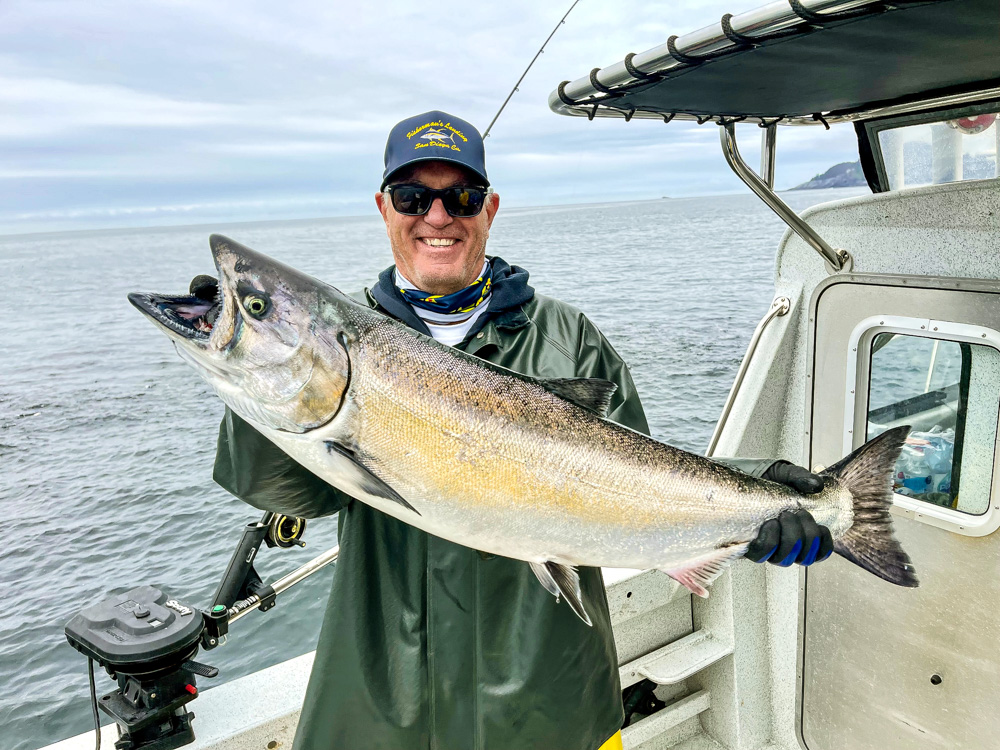
As far as the halibut, we had tried drifting for them, but it was not working. In fact, our attempt to catch limits of halibut for our three days had been underwhelming to say the least. The weather was not our friend the previous two days and it made it impossible to anchor. Nick DiBenedetto did manage to bring in an estimated 250 plus pound halibut that is on the cover, but it had to be released as it was too big. The limits at the Queen Charlotte Islands ensure that the big ones go back to reproduce. Plus, those real big ones are not as tasty and can be wormy. As our attempt to catch halibut was looking like a losing battle, our captain Nathan Smulan looked at us and said let’s try trolling. The general response was we don’t want or need salmon, we want halibut. He replied that we would troll for halibut at about 160 feet. In all my years at fishing at various locations in Alaska and Canada I have never heard of trolling for halibut. To be honest I rolled my eyes.
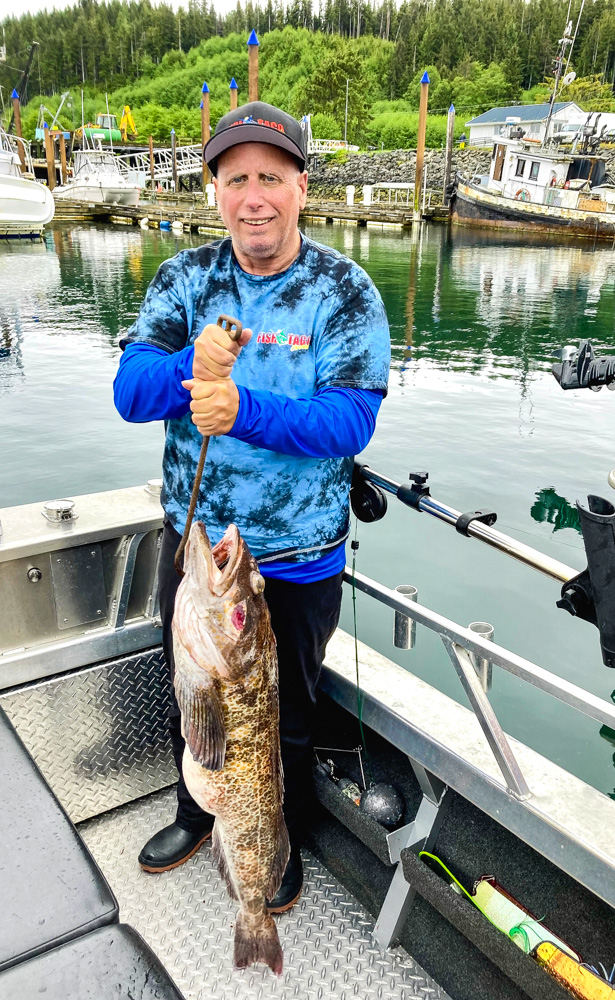
I guess you can teach an old dog new tricks because as soon as we started trolling one of the rods got hit and Pat Burns reeled in a decent size halibut. We trolled two downriggers, both with a three-pound weight on the downriggers and one outfit had a jig with some bait and the other downrigger had a hoochie with some bait. Soon after Pat reeled his in the other side went off and I grabbed the reel. It started to peel line and I told Nathan that this was not a halibut , probably a lingcod. I was wrong again. After a five-minute fight, a chunky 20-pound king salmon was netted and brought on board. It was not soon after that, that another halibut was brought on board.

It did not take long to catch as many halibut on the troll that we did the previous two days. In addition to the butts, we were bringing in the previous mentioned king salmon, lingcod, rockfish and black bass. It was a lot of fun and very productive. It made for a good way to end our fishing trip.
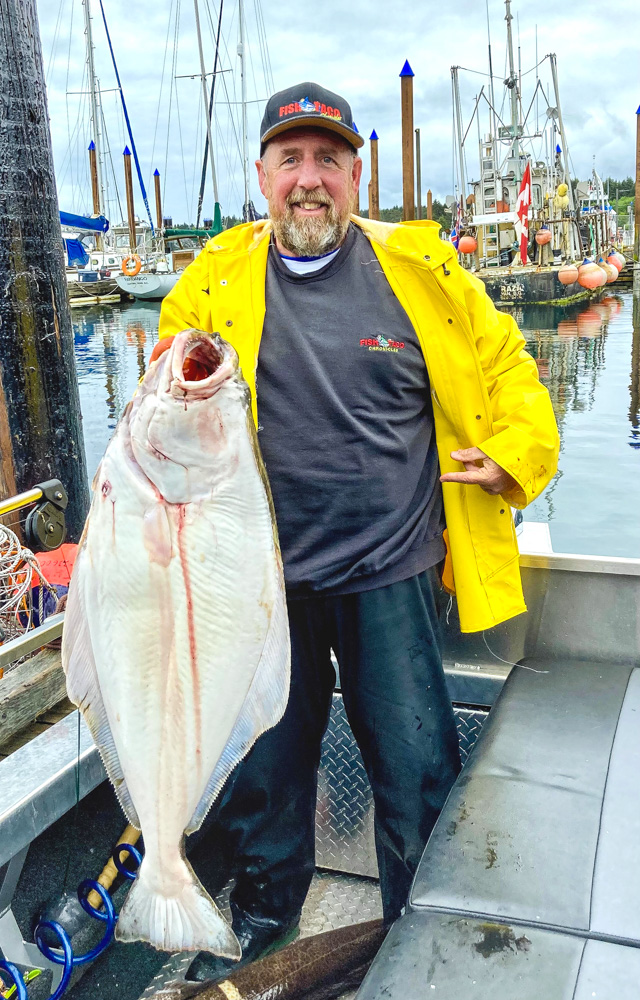
While the fishing was good and probably would have been better if the weather cooperated, the real attraction at Queen Charlotte Safaris is the service at the lodge and the hands-on friendliness of owner Valerie Hoperich. Valerie has been doing this for years and she brings a welcoming touch to the lodge that was not lost on many of the guest there. Little things like a warm bowl of homemade soup waiting for you when you came in off the boat were a huge hit. Our weather was not the best and it was cold and damp. Even with the protective raingear and boots that the lodge provides, anglers still come in cold and damp on days like we had. But that hot soup along with fresh homemade bread warmed the bones.
There was a group of anglers from Southern California there who had been there before. That tells you something about a lodge when people come back. They all worked for McDonalds with one of the guys owning 6 or 7 of them. I think this was their board meeting LOL. Great place to have it.
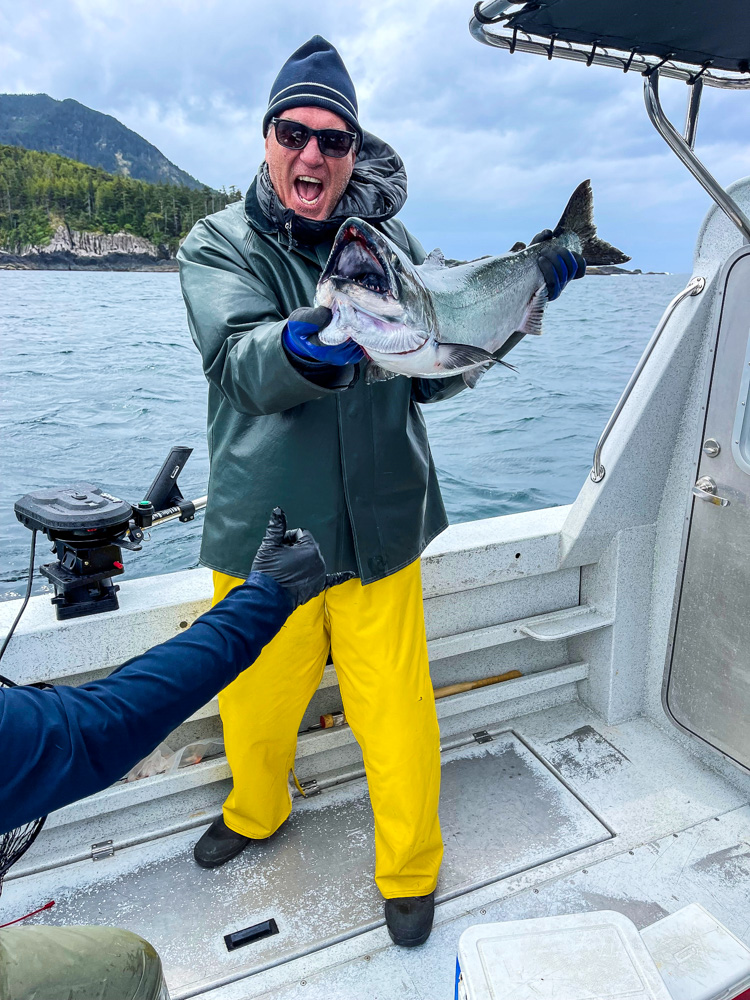
The Queen Charlotte Islands otherwise known as Haida Gwaii are about a 2-hour flight from Vancouver BC. The Queen Charlotte Islands were officially renamed Haida Gwaii in December 2009 as part of an historic reconciliation agreement between the Haida Nation and the province of British Columbia. Haida Gwaii was created as an alternative name for the islands to acknowledge the history of the Haida Nation. The name Haida Gwaii translates as “islands of the people” in the Haida language. We flew from LAX to Vancouver and then spent the night in BC and had an easy flight the next day to Sandspit in Haida Gwaii. Covid restrictions made travelling a tad more difficult than anticipated but those restrictions have since been lifted. These islands are beautiful and the vast populations of herring and needlefish in the water means that the islands of Haida Gwaii offer excellent fishing for salmon.
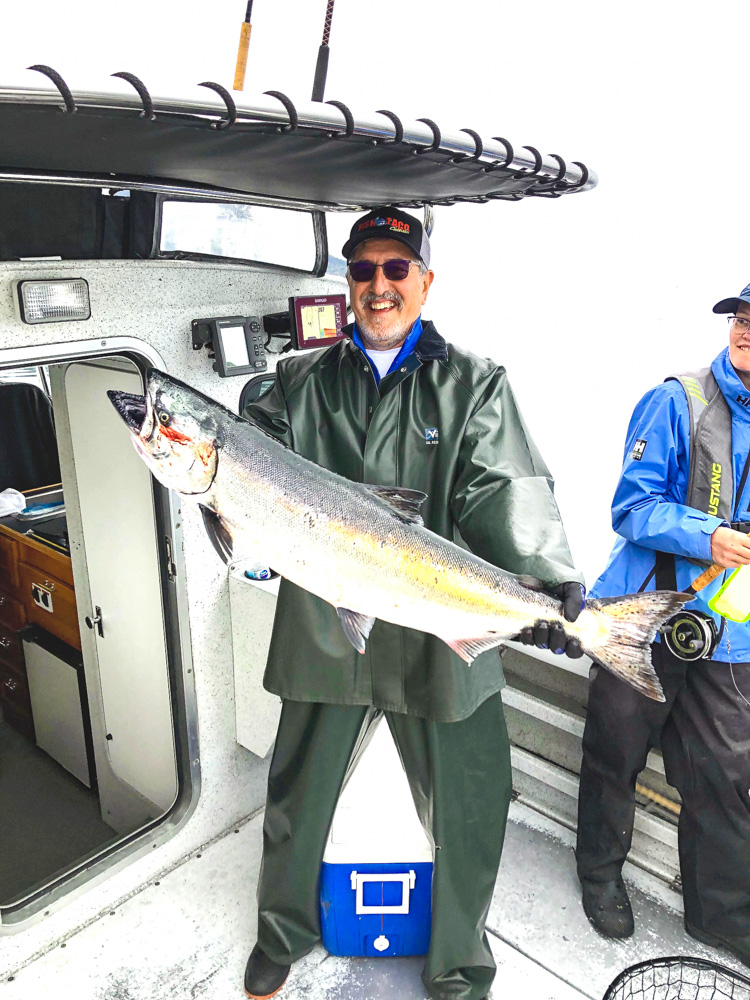
Back to the lodge. The dinners were to die for. I am pretty sure I gained a few pounds while I was there. The last day of fishing we put out crab traps on the way out to the fishing grounds and picked them up on the way in. That night we had freshest crab you could imagine along with steak, mashed potatoes, and vegetables. And then a scrumptious desert. Guest are allowed all the soft drinks they like and at dinner you are offered two generous sized glasses of red or white wine. There is also a small bar that is filled with beer and various alcohol to make your favorite drinks for a price. Ronald was the bartender and a server at dinner and made everyone feel welcome.
Our rooms were small but clean and made up each day. There was plenty of hot water which was a huge plus as most of the people came in at the same time and went to the shower after their hot bowl of soup. I have been to places where all of the sudden you are taking a cold shower but that never happened.
As I mentioned the other boat did better than our boat for the salmon. That boat which had Domenico Alphonzo Francesco Iorfino better known as Dom, Tom Wolf, Jerry Blain and Bruce Roeland really did well catching salmon. They were trolling in pretty much the same area as us, but their boat was the salmon magnet. Captain Cori was the captain and to be honest it is unusual to have a women captain, but she got the guys on the salmon and credit must be given to her. Cori is also and artist and some of her creations are on display at the lodge. And she has to be pretty tough to put up with these four guys for three days of fishing.
Our boat did well with lingcod and halibut. The real bummer is that I have never experienced better yelloweye fishing, but they are a restricted fish and had to be put back. We all caught some monster yelloweye which might be my favorite fish to eat. The boat I was on consisted of Bill Ellis, Nick DiBenedetto Joe Bahash, Pat Burns and me. Pat was the fishing fool on our boat. He was the first one to drop down and the last one to reel up. There were times when me, Joe, Bill or Nick went in the cabin to take a break when we were fishing but Pat never did. He was like a loyal dog waiting for his owner to come home. Even when we moved from one spot to another, and we all went inside to get warm and maybe grab a bite to eat (they provide great lunches too) Pat stood outside. This guy is dedicated. And I am sure he caught the most fish and deservedly so.
The crew at Queen Charlotte Safaris wants nothing more than to make sure you experience great food, beautiful scenery and excellent service when you are fishing. That is a winning combination.

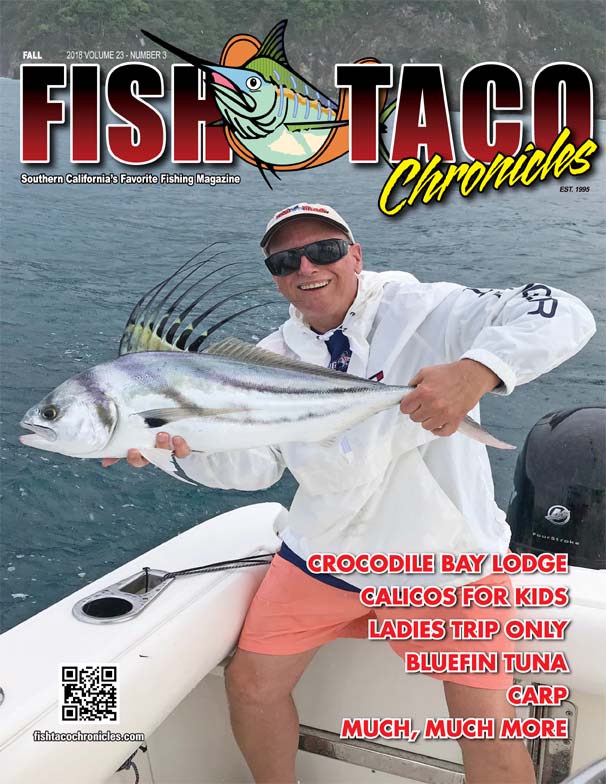

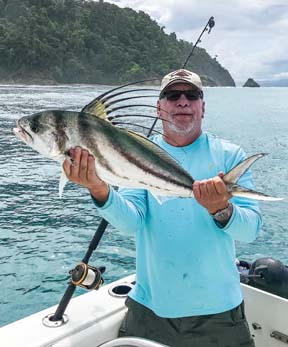
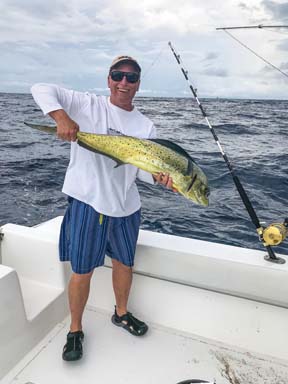 All the equipment on the boat worked great. They had excellent rods and reels and they were boasting the PENN brand and name. We were catching our small dorado and tuna on little Senator reels, but the marlin was caught on a new PENN International reel.
All the equipment on the boat worked great. They had excellent rods and reels and they were boasting the PENN brand and name. We were catching our small dorado and tuna on little Senator reels, but the marlin was caught on a new PENN International reel.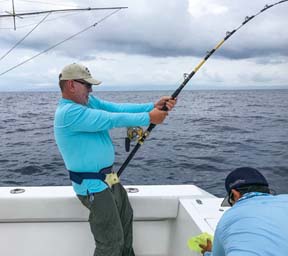
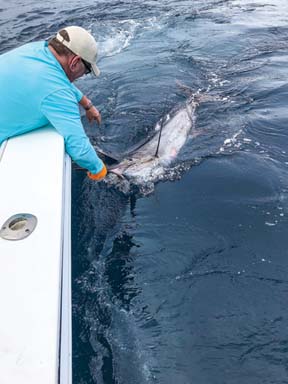
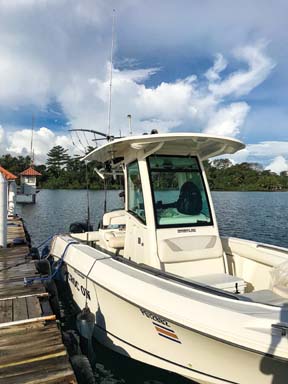 their 600- foot pier. I did not fish on the pier, but I was tempted. I was told that there were big pargo down there, but I was so busy doing other things I did not have the time to try it.
their 600- foot pier. I did not fish on the pier, but I was tempted. I was told that there were big pargo down there, but I was so busy doing other things I did not have the time to try it.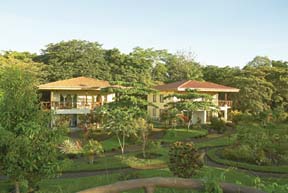 On day three which was our last full day there, Joe and I were booked to go inshore fishing and try for roosterfish.
On day three which was our last full day there, Joe and I were booked to go inshore fishing and try for roosterfish. 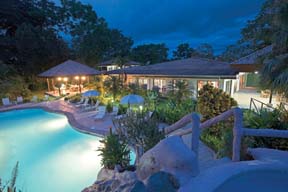 We were on a smaller 25’ Whaler since we were going inshore. It was a beautiful and comfortable boat. The weather looked like it could be nasty as there were many clouds and just had the feeling of rain. Once we got on the water and were out for 10 minutes we could see rain all over the water but for some reason it was leaving us alone. It was all around us like we had a cone over us. Not 30 minutes from the dock at Crocodile Bay Resort we started trolling live bait about 200 yards off the coast for roosterfish. After about a half hour of this with no bites I grabbed a spinning reel with a popper and gave that a try. It took about an hour into our fishing but a roosterfish (the one on the cover) finally got fooled on the troll and I quickly jumped up and went to battle with the 15-20 pound or so roosterfish. When I was here 18 years ago I caught one over 50 pounds and can still remember what a great fight that was. This guy for his size was quite feisty and did not want to come in but after about 5 minutes I got him to the boat. After a couple of photos that Joe should be proud of the rooster was carefully released.
We were on a smaller 25’ Whaler since we were going inshore. It was a beautiful and comfortable boat. The weather looked like it could be nasty as there were many clouds and just had the feeling of rain. Once we got on the water and were out for 10 minutes we could see rain all over the water but for some reason it was leaving us alone. It was all around us like we had a cone over us. Not 30 minutes from the dock at Crocodile Bay Resort we started trolling live bait about 200 yards off the coast for roosterfish. After about a half hour of this with no bites I grabbed a spinning reel with a popper and gave that a try. It took about an hour into our fishing but a roosterfish (the one on the cover) finally got fooled on the troll and I quickly jumped up and went to battle with the 15-20 pound or so roosterfish. When I was here 18 years ago I caught one over 50 pounds and can still remember what a great fight that was. This guy for his size was quite feisty and did not want to come in but after about 5 minutes I got him to the boat. After a couple of photos that Joe should be proud of the rooster was carefully released.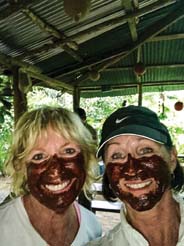
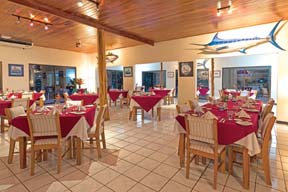

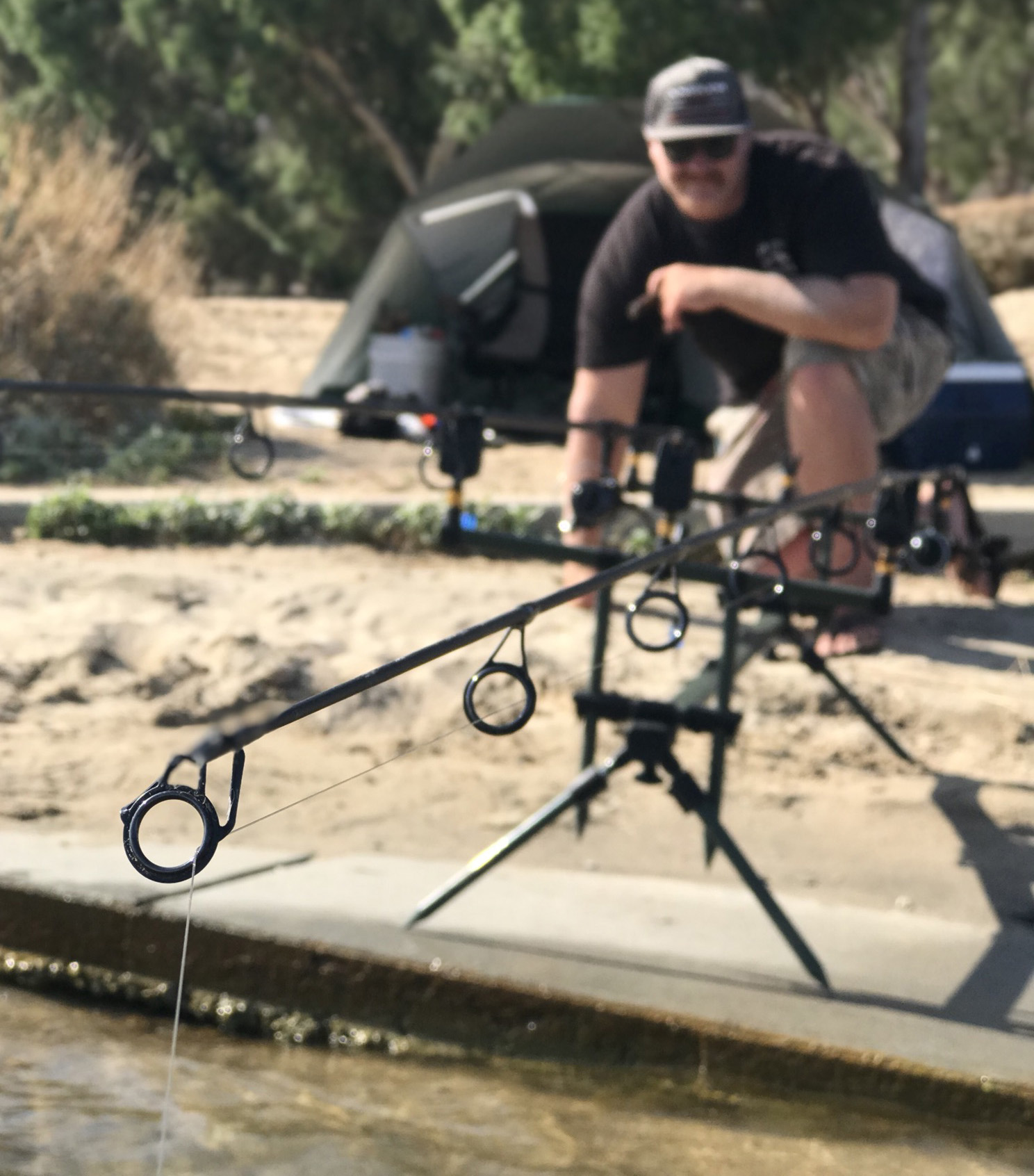 Having been born in Ukraine, I grew up hearing about the joys of carp fishing from my grandpa, my dad and their friends who still practice their traditional methods here on the lakes of southern California. However, I wanted to hear more about the modern techniques, directly from the anglers pursuing these monster carp under the radar locally. I recently linked up with David Smith, an avid carp angler from the UK, who is now living in Riverside county and his buddy Patrick, a life long Californian fisherman who’s recently fallen in love with these new angling techniques and thrill of carp fishing. Interestingly, David is an owner of a bait company by the name of CarpPro, that supplies this growing group of enthusiasts with some of the products necessary to catch one of these monsters. I’ll touch more on that later!
Having been born in Ukraine, I grew up hearing about the joys of carp fishing from my grandpa, my dad and their friends who still practice their traditional methods here on the lakes of southern California. However, I wanted to hear more about the modern techniques, directly from the anglers pursuing these monster carp under the radar locally. I recently linked up with David Smith, an avid carp angler from the UK, who is now living in Riverside county and his buddy Patrick, a life long Californian fisherman who’s recently fallen in love with these new angling techniques and thrill of carp fishing. Interestingly, David is an owner of a bait company by the name of CarpPro, that supplies this growing group of enthusiasts with some of the products necessary to catch one of these monsters. I’ll touch more on that later!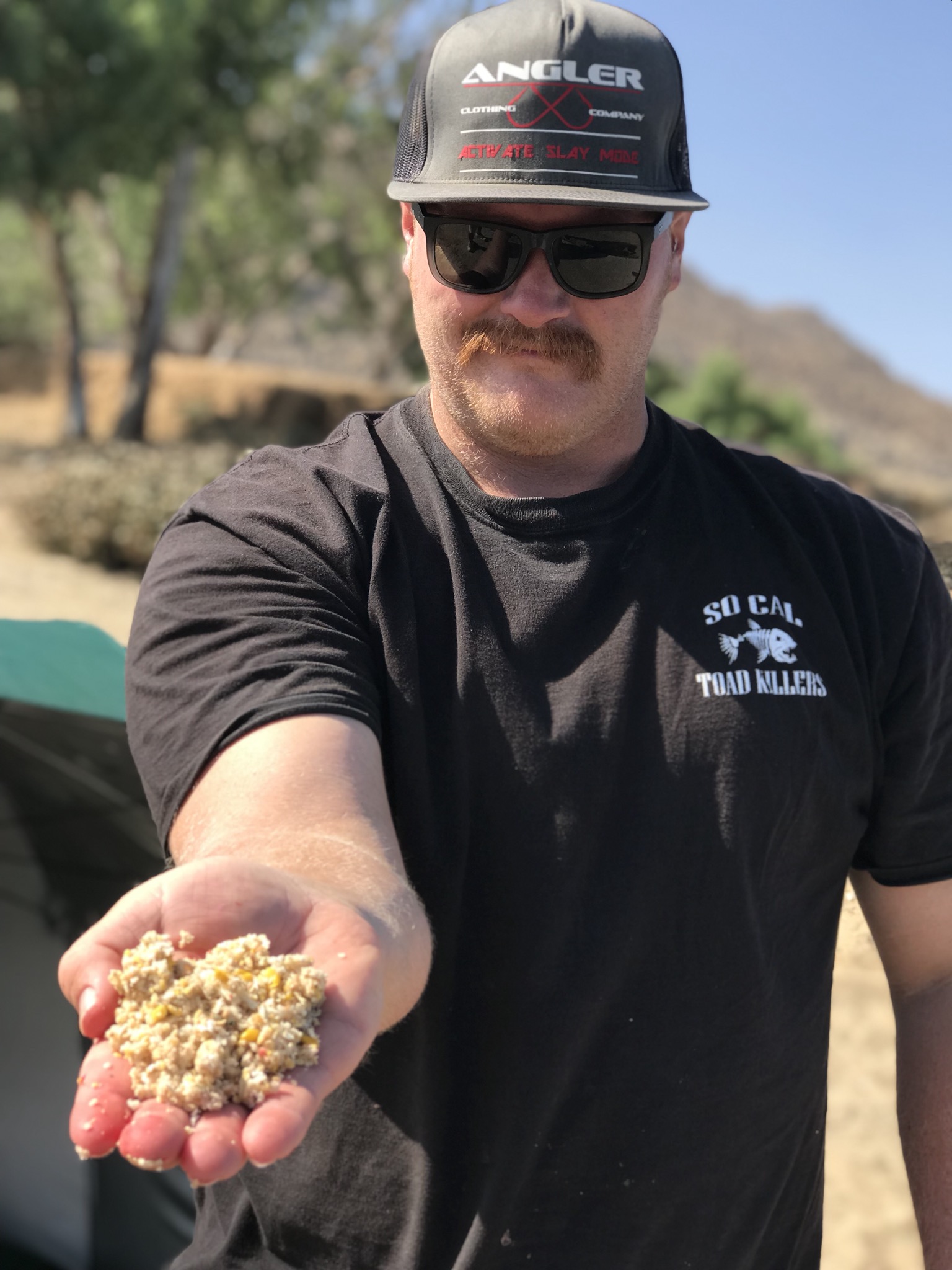 The guys had decided on one of the many local waters that are known to contain a healthy population of carp for our session. Immediately, I’m struck by the tackle these guys are using. Long 12ft rods and large surf casting reels are standard issue to propel large dough balls the many yards necessary to reach the fish. “Being bank anglers, you a need a rod that has the ability to cast a heavy bait ball to the fish, which sometimes means over a distance of 100+ yards,” explained David. “Carp often tell you where they are by jumping and rolling, something that should never be ignored. Nothings more infuriating than seeing a fish and not being able to get to him!” he said. I watched him cast a float and sinker combo that allowed him to determine the depth and nature of the bottom, at a spot where leaping fish had been seen. “We’re attempting to understand what’s down at the bottom so we know how to present a bait and use the line clip on the reel to cast to the same spot every time by carefully determining the range” added David. Developing a “spot” is key to successful carp angling the guys told me, especially here in California where chumming to create a feeding zone isn’t allowed.
The guys had decided on one of the many local waters that are known to contain a healthy population of carp for our session. Immediately, I’m struck by the tackle these guys are using. Long 12ft rods and large surf casting reels are standard issue to propel large dough balls the many yards necessary to reach the fish. “Being bank anglers, you a need a rod that has the ability to cast a heavy bait ball to the fish, which sometimes means over a distance of 100+ yards,” explained David. “Carp often tell you where they are by jumping and rolling, something that should never be ignored. Nothings more infuriating than seeing a fish and not being able to get to him!” he said. I watched him cast a float and sinker combo that allowed him to determine the depth and nature of the bottom, at a spot where leaping fish had been seen. “We’re attempting to understand what’s down at the bottom so we know how to present a bait and use the line clip on the reel to cast to the same spot every time by carefully determining the range” added David. Developing a “spot” is key to successful carp angling the guys told me, especially here in California where chumming to create a feeding zone isn’t allowed.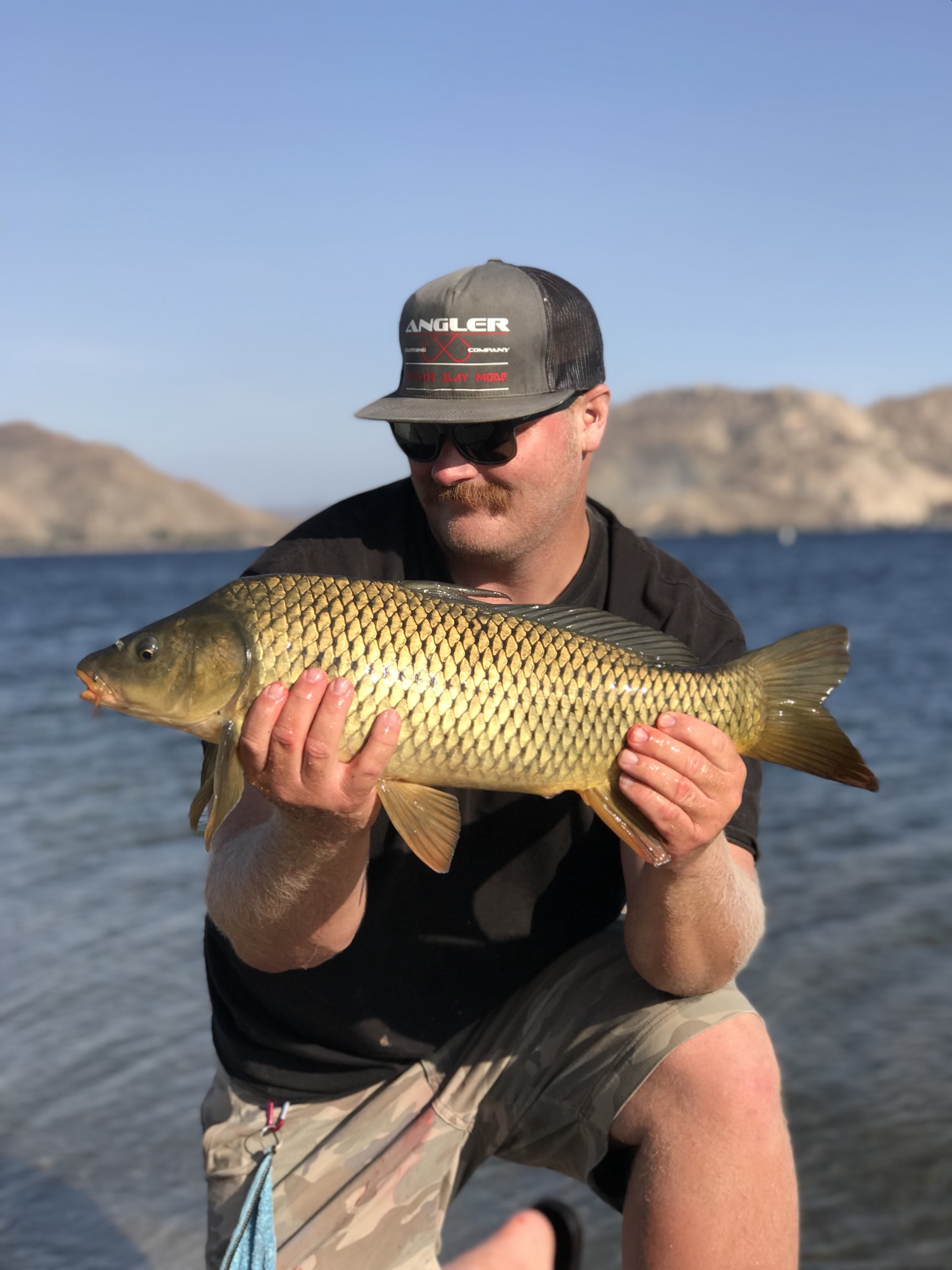 Now that they have established their spot, we’ll move on to the bait and hooking arrangements. Like many traditional carp angling techniques, things are focused largely on the way carp feed by sucking up and blowing around as they vacuum up food from the lake or river bed.
Now that they have established their spot, we’ll move on to the bait and hooking arrangements. Like many traditional carp angling techniques, things are focused largely on the way carp feed by sucking up and blowing around as they vacuum up food from the lake or river bed.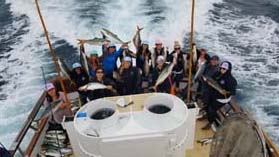
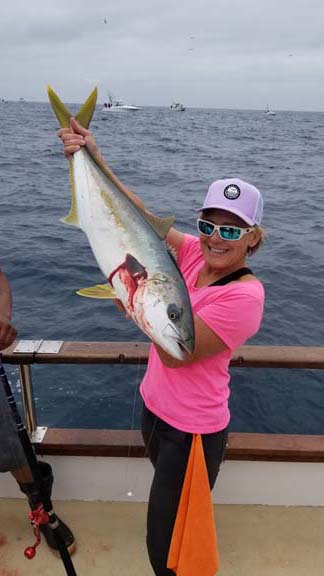 Before we even got on the boat, the Tuna War participants from the Tomahawk and Tribute, were getting back from their trip and were at the landing. Of course, we had to have pictures taken with the Wicked Tuna stars, Captain Dave Marciano and Captain Paul Hebert. This only created more excitement.
Before we even got on the boat, the Tuna War participants from the Tomahawk and Tribute, were getting back from their trip and were at the landing. Of course, we had to have pictures taken with the Wicked Tuna stars, Captain Dave Marciano and Captain Paul Hebert. This only created more excitement.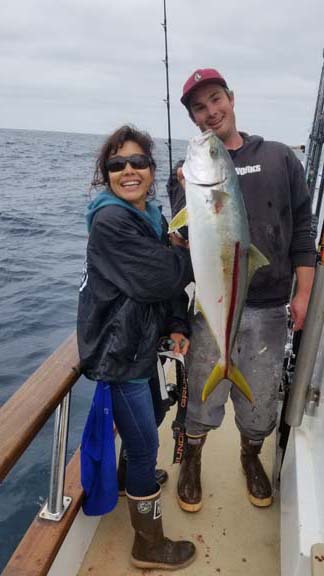
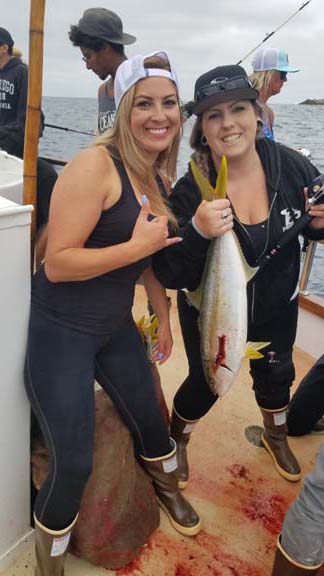 Our adventure was to be an overnight on The Voyager with Captain Todd Myers at the helm. Todd and his crew, RJ and Chuck, were about to experience what many crews don’t get to. Fifteen lovely ladies who are biting at the bit to get out on the water and catch some fish. All of our tackle was ready to go and our first stop was to get bait.
Our adventure was to be an overnight on The Voyager with Captain Todd Myers at the helm. Todd and his crew, RJ and Chuck, were about to experience what many crews don’t get to. Fifteen lovely ladies who are biting at the bit to get out on the water and catch some fish. All of our tackle was ready to go and our first stop was to get bait.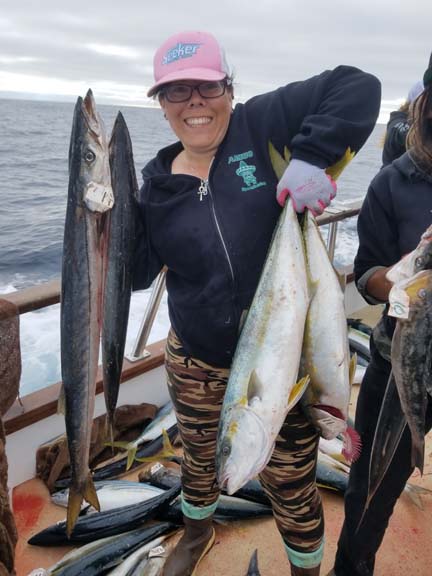 We headed to the Coronado Islands to catch some yellowtail and anything else that would bite. The Voyager arrived at 4:30am and several ladies got up to fish. They were calico fishing and it was off the hook. Every cast they caught a fish. “Waking up with these lassies at 4:30 in the morning next to the island catching bass until sunrise was my favorite part of the trip” said Donna. Hookup Baits, various plastics and sardines were what the bass were gorging themselves on.
We headed to the Coronado Islands to catch some yellowtail and anything else that would bite. The Voyager arrived at 4:30am and several ladies got up to fish. They were calico fishing and it was off the hook. Every cast they caught a fish. “Waking up with these lassies at 4:30 in the morning next to the island catching bass until sunrise was my favorite part of the trip” said Donna. Hookup Baits, various plastics and sardines were what the bass were gorging themselves on.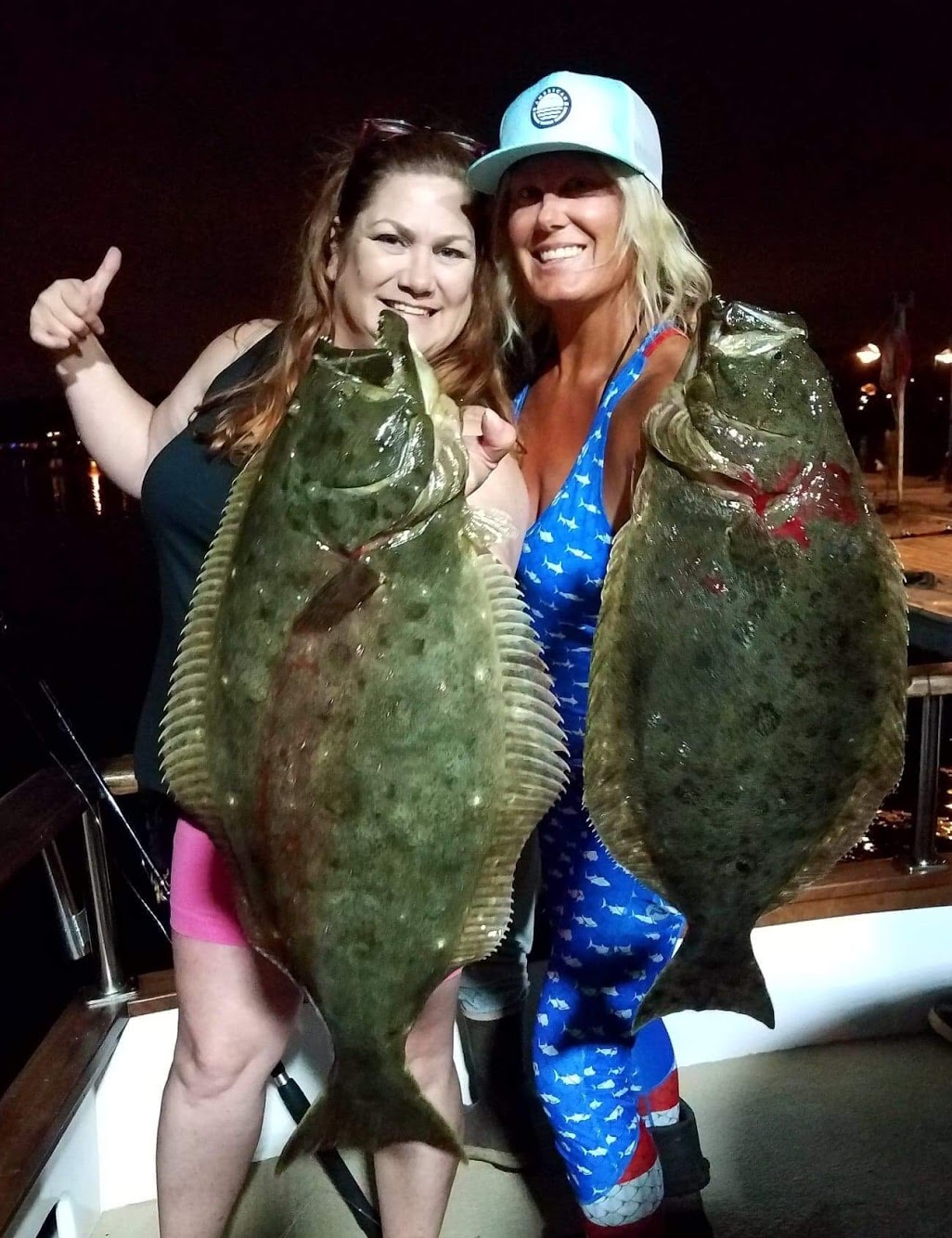 The sun rose and so did everyone who was still sleeping. Captain Todd took off to find some yellowtail. They were all around the Coronados, so they were easy to spot. The yellowtail were biting anything and everything. Charina surprisingly states, “I even caught one on a flatfall.” Sunny spent most of her day at the bow using her Seeker baby blue 9’3” rod with an Accurate Valiant 500 using a blue and white JRI jig to catch the majority of her fish. It was an incredible site to watch the yellowtail follow your lure as you reeled it in. As Casey puts it, “When everyone was hooked up on a yellowtail, the excitement was roaring.” Women have a tendency to scream when they’re hooked up to a fish. I know I do. Michelle puts it nicely, “It was a reunion of all women who come together and work together to help one another to fish and have fun.”
The sun rose and so did everyone who was still sleeping. Captain Todd took off to find some yellowtail. They were all around the Coronados, so they were easy to spot. The yellowtail were biting anything and everything. Charina surprisingly states, “I even caught one on a flatfall.” Sunny spent most of her day at the bow using her Seeker baby blue 9’3” rod with an Accurate Valiant 500 using a blue and white JRI jig to catch the majority of her fish. It was an incredible site to watch the yellowtail follow your lure as you reeled it in. As Casey puts it, “When everyone was hooked up on a yellowtail, the excitement was roaring.” Women have a tendency to scream when they’re hooked up to a fish. I know I do. Michelle puts it nicely, “It was a reunion of all women who come together and work together to help one another to fish and have fun.”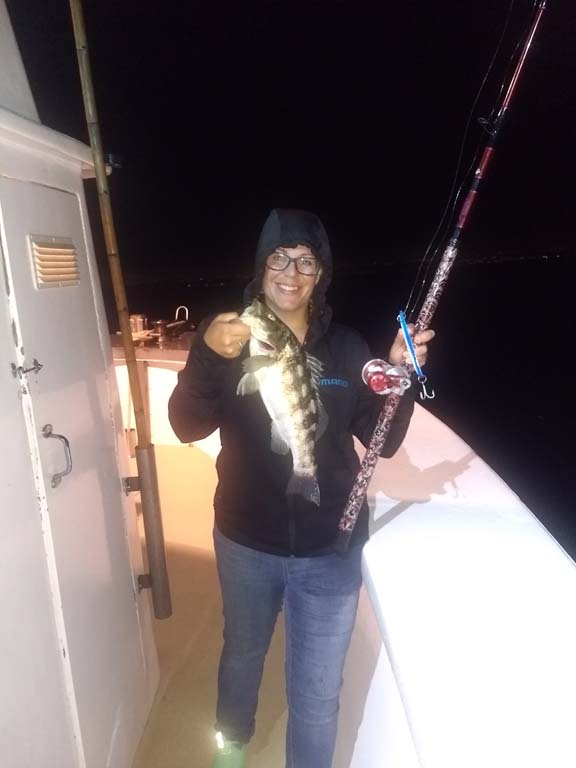 My first fish was a huge bonito caught on my Accurate Valiant 300 using sardines. I’m the kind of angler who tries everything just for fun when fishing because you never know what the fish will bite. I tried a surface iron and almost landed the fish except it spit the hook. Using a yoyo setup wasn’t a good choice. The fish didn’t bite it at all. The hot ticket seemed to be the live bait which were sardines and that was what I landed my jackpot fish on. I caught all my yellowtail on them as did most of the other ladies.
My first fish was a huge bonito caught on my Accurate Valiant 300 using sardines. I’m the kind of angler who tries everything just for fun when fishing because you never know what the fish will bite. I tried a surface iron and almost landed the fish except it spit the hook. Using a yoyo setup wasn’t a good choice. The fish didn’t bite it at all. The hot ticket seemed to be the live bait which were sardines and that was what I landed my jackpot fish on. I caught all my yellowtail on them as did most of the other ladies.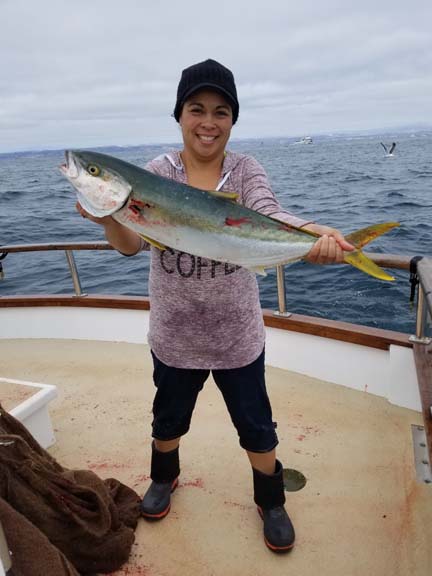 The sea lions were in full force as we fished. Jessica was hooked up with one of her many yellowtails and wouldn’t you know it, a seal lion tried to get it away from her. She fought hard for that fish and won. Jessica exclaimed, “When I got the yellowtail on the boat, there were no bite marks on it.” I didn’t get as lucky. The fish was at the boat with color and the deckhand tried to gaff it twice, but he missed both times. Out from under the boat in stealth mode, came a seal that must have been about 800lbs. He was the biggest one I think I’ve ever seen. He stole my fish and next thing you know my line is ripping off my reel. I stared at the deckhand in disbelief as I watched my line take off. The funny part is, I got all my line back and even the sliding sinker was there. The only thing missing was the hook. I hope it caused some pain to the seal’s stomach when he ate my fish.
The sea lions were in full force as we fished. Jessica was hooked up with one of her many yellowtails and wouldn’t you know it, a seal lion tried to get it away from her. She fought hard for that fish and won. Jessica exclaimed, “When I got the yellowtail on the boat, there were no bite marks on it.” I didn’t get as lucky. The fish was at the boat with color and the deckhand tried to gaff it twice, but he missed both times. Out from under the boat in stealth mode, came a seal that must have been about 800lbs. He was the biggest one I think I’ve ever seen. He stole my fish and next thing you know my line is ripping off my reel. I stared at the deckhand in disbelief as I watched my line take off. The funny part is, I got all my line back and even the sliding sinker was there. The only thing missing was the hook. I hope it caused some pain to the seal’s stomach when he ate my fish.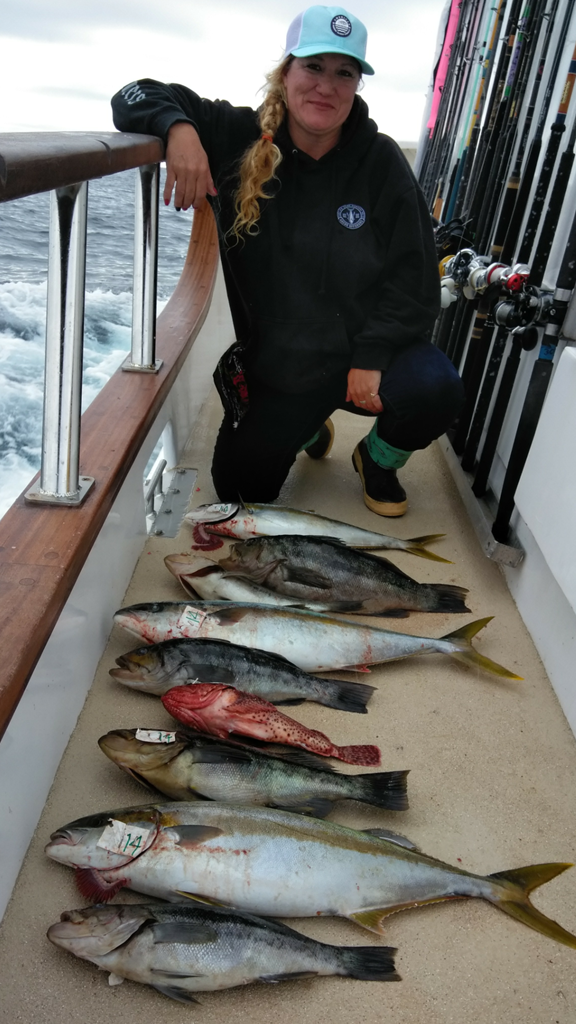 One thing about fishing with women is they encourage each other. If someone lost a fish, the others would say, “You’ll get them next time.” No one said anything negative about anyone or to anyone. We were there for each other no matter what. There were many levels of expertise on the boat, but we all did great and put the wood to the fish. “Imagine my surprise when we got on some yellowtail and all the women fished well. At one point I was fighting a fish and I looked down the rail and saw 4 women on fish weaving over and under, working together, yelling ‘color’ all over the place and successfully landing them all” said Rachel. We kept the deckhands on their toes and they definitely earned their keep that day.
One thing about fishing with women is they encourage each other. If someone lost a fish, the others would say, “You’ll get them next time.” No one said anything negative about anyone or to anyone. We were there for each other no matter what. There were many levels of expertise on the boat, but we all did great and put the wood to the fish. “Imagine my surprise when we got on some yellowtail and all the women fished well. At one point I was fighting a fish and I looked down the rail and saw 4 women on fish weaving over and under, working together, yelling ‘color’ all over the place and successfully landing them all” said Rachel. We kept the deckhands on their toes and they definitely earned their keep that day.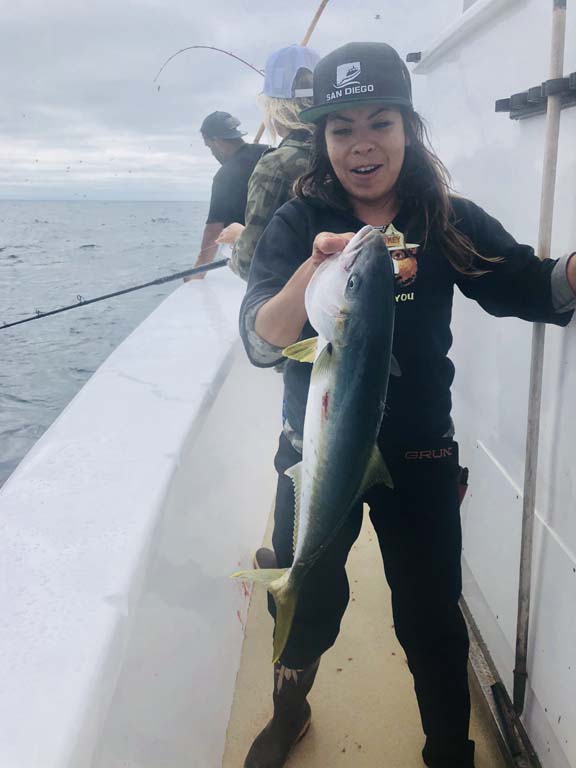 A funny thing happened to Ginger on the trip. She was fishing on the bow when she felt something poking her toe. She took off her boot, but didn’t see anything. She put it back on and the pain was even worse, then suddenly she saw a fish spine broken off in the top of her boot. At that exact moment, she landed a yellowtail. She threw her boot off and started winding it in on one foot while the deckhand worked to get the spine out. The deckhand got the boot back on her foot just in time for him to gaff her fish and this just happened to be the first yellowtail she ever caught.
A funny thing happened to Ginger on the trip. She was fishing on the bow when she felt something poking her toe. She took off her boot, but didn’t see anything. She put it back on and the pain was even worse, then suddenly she saw a fish spine broken off in the top of her boot. At that exact moment, she landed a yellowtail. She threw her boot off and started winding it in on one foot while the deckhand worked to get the spine out. The deckhand got the boot back on her foot just in time for him to gaff her fish and this just happened to be the first yellowtail she ever caught.